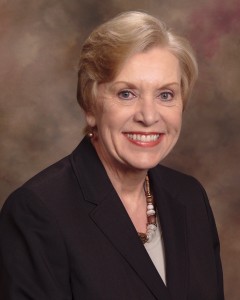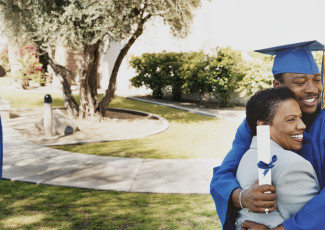Community Colleges and Four-Year Degrees
By Sonya Stinson
April 19, 2016
A conversation with Linda Thor about why it makes sense to allow community colleges to offer bachelor’s degrees that meet local workforce needs.
 Linda Thor was chancellor of California’s Foothill-DeAnza Community College District in 2014, when the state passed legislation allowing community colleges to offer baccalaureate programs. Along with Constance Carroll, chancellor of the San Diego Community College District, Thor led the effort to pass the bill.
Linda Thor was chancellor of California’s Foothill-DeAnza Community College District in 2014, when the state passed legislation allowing community colleges to offer baccalaureate programs. Along with Constance Carroll, chancellor of the San Diego Community College District, Thor led the effort to pass the bill.
Today, 22 states allow community colleges to develop bachelor’s degree programs, with 80 colleges offering more than 500 degree programs.
Thor, now chancellor emeritus of the Foothill-DeAnza district, is a board member of the Community College Baccalaureate Association (CCBA), which advocates for the continued expansion of two-year institutions into the sometimes fiercely guarded territory of conferring four-year degrees.
Here, she talks about the rationale behind community colleges becoming baccalaureate providers and what it takes for them to succeed.
Why have so many states and community colleges joined this movement?
A number of doctoral dissertations have been done on the community college baccalaureate, and they tend to all have similar findings. What primarily motivates a state to do this is to meet local workforce needs.
These degrees tend to fill a niche market. The community college baccalaureate is not about offering a bachelor’s degree in history, political science or English. Rather, it’s about a high-demand, applied workforce degree, such as allied health. Another big area is teacher preparation, particularly specialty areas such as bilingual education or secondary school science. There’s also a need in professional credentialing. For example, you’ll see a lot of activity in the public safety areas, such as law enforcement, fire science or emergency medical technicians. The technological revolution has driven a lot of these [degrees] as well, such as very specific needs for something in cybersecurity or information assurance.
You also see a lot of activity in rural areas, where, if it were not for the community college baccalaureate, individuals would have to leave their community to go to a larger city in order to be able to complete the bachelor’s degree.
How do these baccalaureate programs fit within the community college mission?
You will hear some opponents of the community college baccalaureate argue that this is mission creep. However, I would respond that workforce development has always been a key component of the community college mission.
The other thing I think is important is that community colleges are really expert at serving underserved students. We know that the vast majority of people of color who enter higher education enter through the community colleges. What an ideal situation for all of those individuals to be able to stay on a campus — where they’re well-supported, they’re very familiar [with the institution] and it’s very accessible and affordable for them — to complete their bachelor’s degree.
What can community colleges do to enhance their chances of success in this area?
They should work very closely with the employer community to make sure they have identified an area of high demand so that there will be jobs available for the students when they complete the program. They also need to take time to understand any requirements of accrediting bodies — their regional accreditor in specialized programs like allied health. They need to be clear about how they are going to fund the program, both the startup and the continuation. And they need to have very clear and open communication with the universities in their area, particularly the public universities.
Finally, they need to make sure that the grassroots understand what they are proposing and why. We’re not talking about community colleges becoming research universities. We’re not talking about community colleges offering degrees in history. We’re talking about an extension of the existing workforce-development function of the colleges.
Editor’s note: Tomorrow, we’ll look at Miami Dade College’s successful baccalaureate programs and how they were developed.






